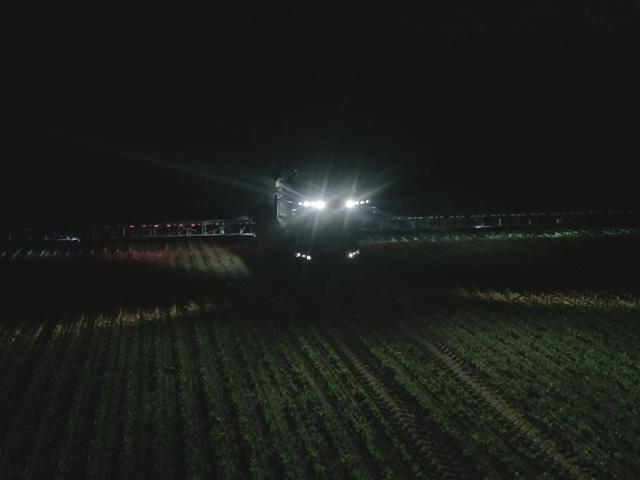MachineryLink
Fendt, Bosch-BASF Partnership Aims to Launch Smart Spraying Technology by 2024
Fendt is testing a new sense-and-act weed management system that it aims to release commercially in 2024 in the Americas and Europe, the equipment manufacturer said.
Sold under the Smart Spraying moniker, the technology is to be a factory-installed option on Fendt's Rogator sprayers. Smart Spraying -- targeting only weeds in fallow fields or in fields with growing crops, in daylight and night -- will be the result of a two-year partnership between the Bosch BASF Smart Farming joint venture and AGCO.
Fendt is an AGCO Corp. brand. Bosch BASF Smart Farming is a joint venture of Bosch and BASF created in 2021 with the stated purpose of combining BASF's agronomic know-how and large image warehouse with Bosch's hardware expertise, especially its camera-enabled "spray or no-spray" technology. Smart Spraying is Bosch BASF's first commercial venture.
"We expect to offer limited availability of the solution in 2024," said Joe Dimler, product manager for Sustainable Crop Care Solutions at Fendt-AGCO. "It is a two-tank solution, and growers will have the flexibility to perform both green-on-brown and green-on-green (applications)."
Green-on-brown describes camera-based automated spraying of weeds growing generally in fallow fields. Green-on-green is a spraying pass in fields with growing crops, for example soybeans. Fendt has a number of these sprayers already in the field for on-farm testing and is finding the best results with sprayers running at a maximum speed of 12 miles per hour.
P[L1] D[0x0] M[300x250] OOP[F] ADUNIT[] T[]
These early tests are showing that on relatively clean fallow fields, herbicide savings amount to about 80%. If the applicator is working over the top of growing crops, savings on contact herbicides are in the range of 50%-70%, Dimler said.
Smart Spraying is not the first sense-and-act application system. But it has some important characteristics that go beyond some of the available technologies. As the system matures, its data will integrate with Xavio Field Manager, a digital crop-optimizing platform.
"The solution (will) interact with the technology to collect characteristics like plant population and plant health and detect early (signs of) fungus in the field," Dimler said. "The grower will leverage the data he collects to make decisions throughout the year." Rogator's Smart Spraying boom mounts 36 cameras.
Smart Spraying offers farmers "insights into the data gathered during the application," according to a release from BASF. "Supported crops currently include corn, soy, cotton, canola, sunflower, sugar beet, with capabilities for more crops such as small grains being added over time."
Dimler anticipates that Smart Spraying will produce an "as-applied" map for farm managers (total amount, average rate applied, etc.) and a weed map.
"You can get a pretty detailed printout of where the weeds are in your field," he said. That is field intelligence owned by the grower.
"Our plans are for the technology to eventually identify weeds and their families," Dimer said. "Initially, it will be somewhat more general to make sure that our accuracy is on point. But we're not very far away from being able to get down to that (weed) family level."
Moisture has a big role in this technology. "That's been our No. 1 variable: How quickly will another batch of weed seeds get enough moisture to germinate? But we've seen that the savings are there, and it's enough to make a good business case to invest in this technology," Dimler said.
The potential for nighttime applications with Smart Spraying is unique. The lighting system, akin to strobe lights, two lights for each camera, was developed by Bosch. The strobe illuminates the target -- every flash a weed sprayed.
"I saw one of the machines we were testing in a parking lot, with the littlest, tiny weeds (growing in the cracks) of the pavement. With those strobes, you'll definitely know where these sprayers are operating," Dimler said. "(Nighttime) use certainly makes sense from a productivity standpoint. Some fungicide applications worked great at night. And having two tanks, we're seeing some advantages to not having some of these chemistries fight each other in a single tank. We wanted to make sure we had that option to be able to go out and get some work done at night to get a timely application out there."
Dan Miller can be reached at dan.miller@dtn.com
Follow him on Twitter @DMillerPF
(c) Copyright 2023 DTN, LLC. All rights reserved.






Comments
To comment, please Log In or Join our Community .